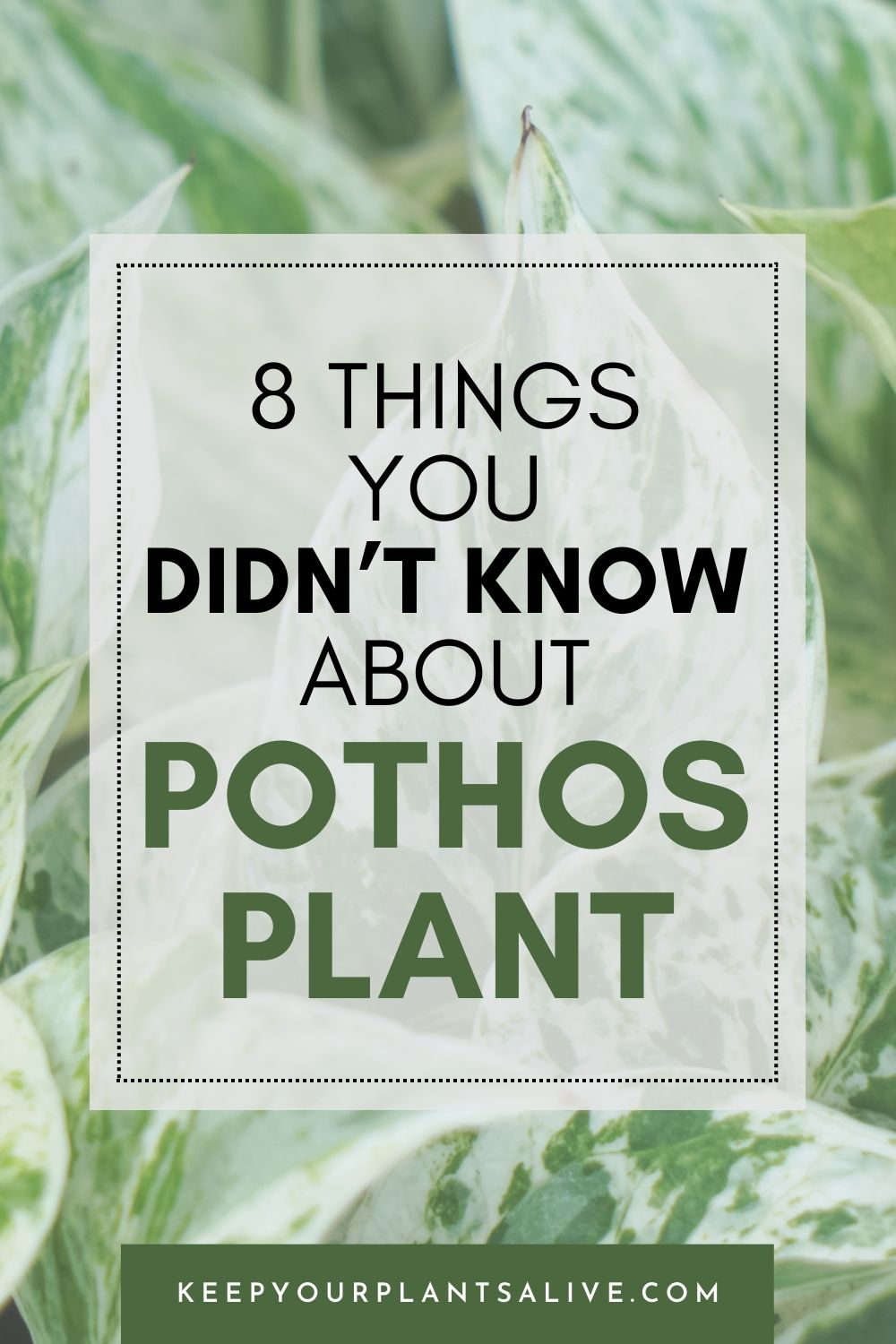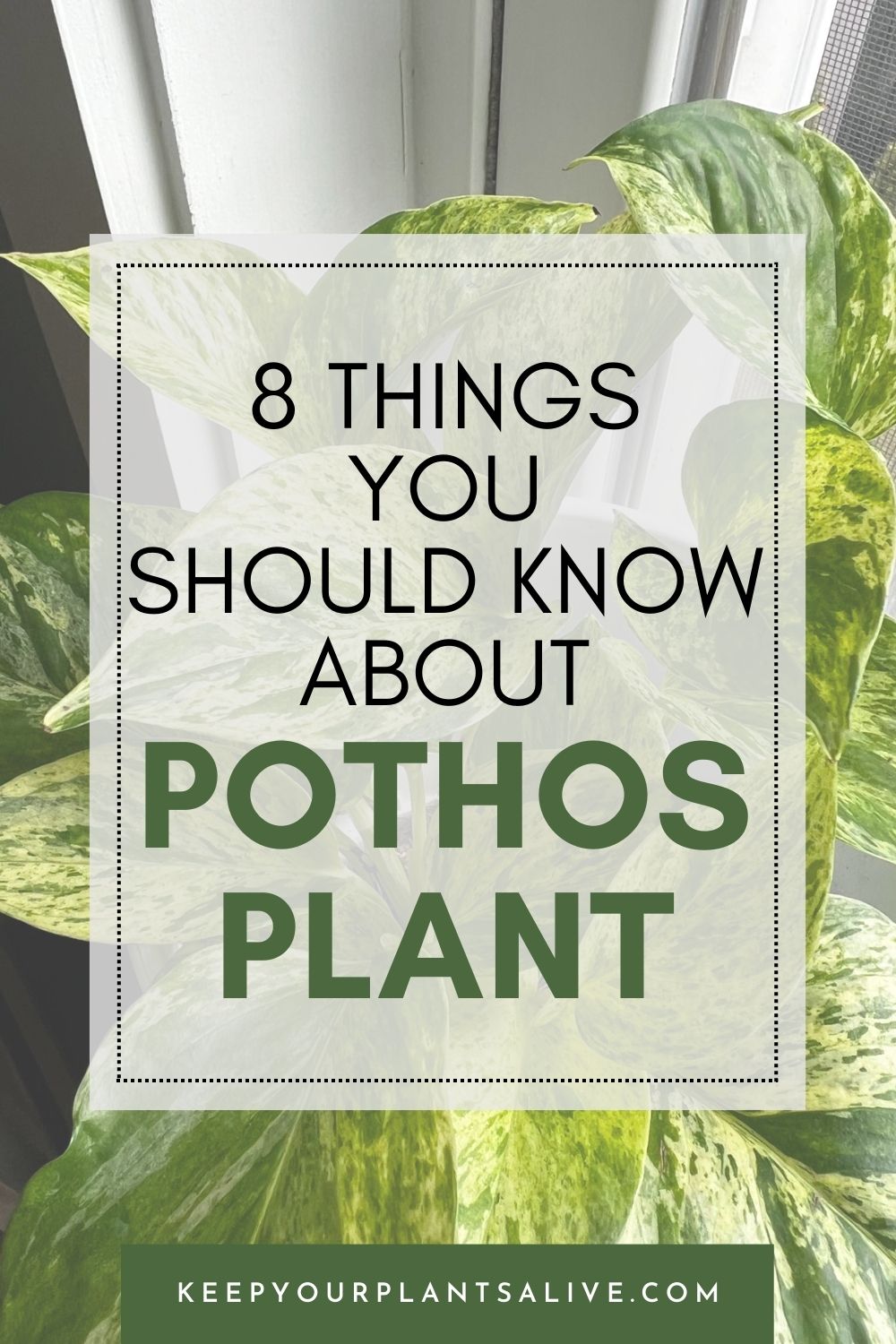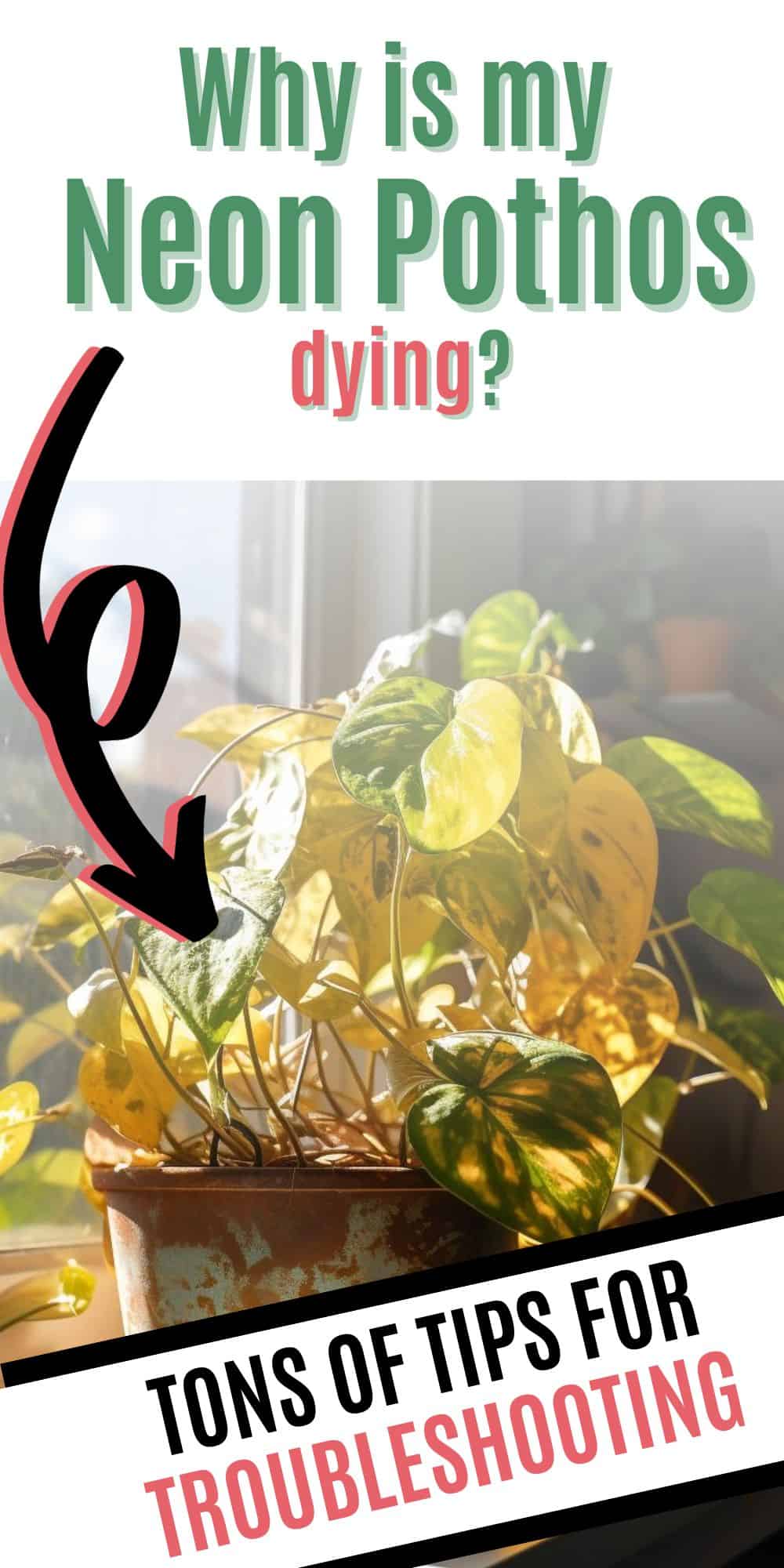Do you suspect your pothos plants of having a pest attack? Here are the most common pothos pests and how to treat them!
When you have such a lovely plant like the pothos in your home and cherish it so much, it is discouraging to see that it’s been attacked by pests.
Thankfully, this issue is easy to treat and not at all uncommon, which means that your plant should see a speedy recovery soon after you start treating it. If you notice some bugs pestering your plant, it is time for some action!
Pothos pests are common, and before you dive into the treatment and get rid of them forever, you need to know what kind of pests you are dealing with first.
Let’s review the most common pests your plant can get and learn how to spot and eliminate them.

Why do pothos plants get bugs?
Some of the main reasons why you can find bugs on this particular plant are included in the list below. You will notice that all of the reasons are connected with improper maintenance.
- High levels of humidity
- Increasingly wet conditions
- Overfertilizing the plant
- Poor ventilation
How to identify and treat common pothos pests
The most common pests to infest pothos plants include:
- spider mites
- mealybugs
- whitefly
- scale
- fungus gnats
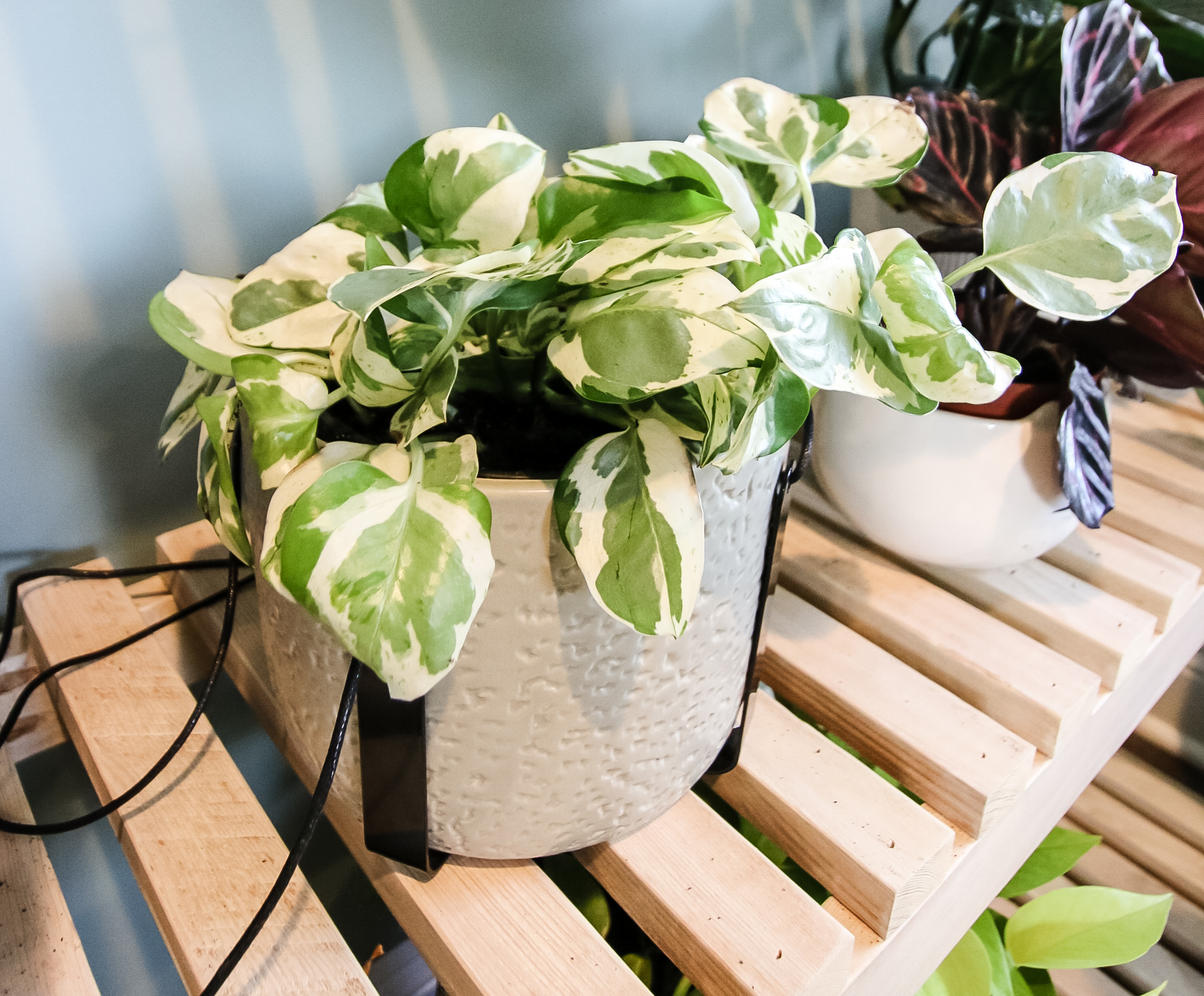
Spider mites
These are tiny little pothos pests that attack most indoor plants.
By themselves, they are very difficult to spot; however, you can’t miss the small web they leave behind is their trademark!
If you leave them unattended, they can wreak havoc on your plant. They attach themselves to the leaves, feed off of them, and leave tiny spots of damage behind.
If you don’t act accordingly, spider mites on pothos can create a big issue, resulting in the plant’s leaves falling off.
Avoid getting to the stage where the leaves turn yellow due to a large infestation. Instead, clean your pothos plant as soon as you spot some pests on it to avoid further infestation.
To check for spider mites, hold a sheet under the plant and gently jiggle it to see if something similar to ground pepper falls on it.
If it does, then the odds are that there are spider mites on your pothos.
Isolate it from all the other plants, prune the affected leaves, and treat the areas with rubbing alcohol. You can also use insecticidal oil, soap, rosemary oil, neem oil, etc.
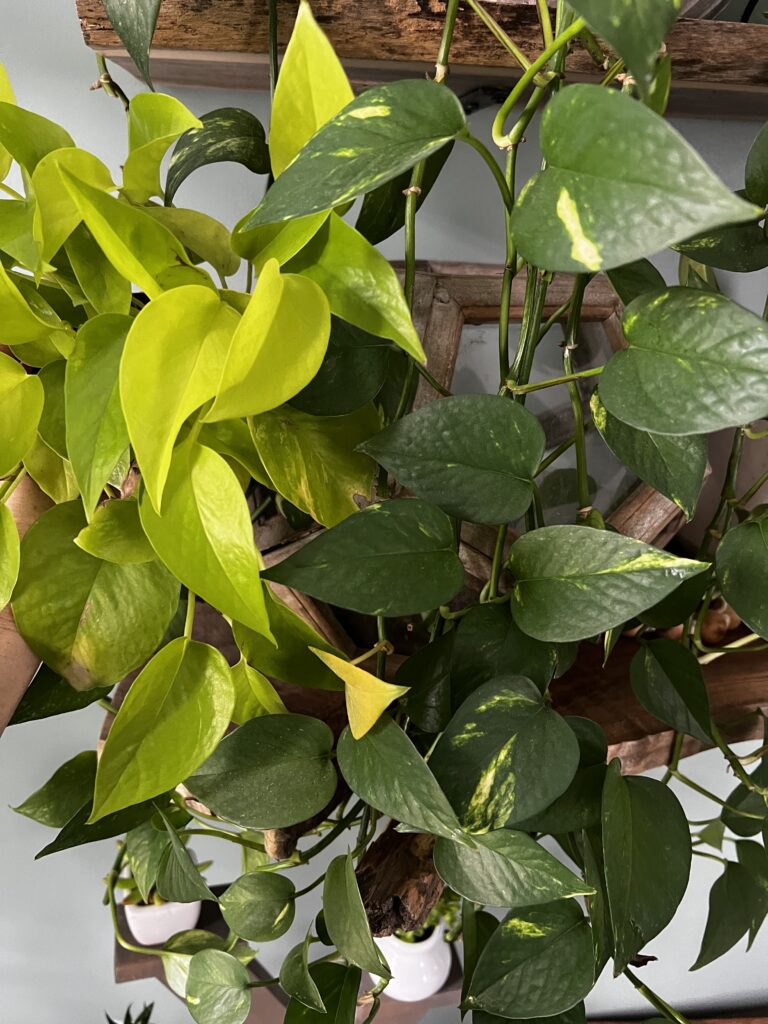
Mealybugs
Mealybugs are by far the most common pothos pests. They are just as annoying and incredibly small as spider mites, although they slightly differ in appearance.
They are oval-shaped, leaving a white powder on the pothos plant and small eggs around the stems and leaves.
While you may notice this, mealybugs on pothos feed off the sap and leave behind some deformed leaves, causing yellowing and leaf loss.
If you want to check whether your pothos plant has these, see if a white cottony mass is running out of the drainage holes whenever you water the plant.
If that’s the case, swab the affected areas with cotton swabs that have been dipped in rubbing alcohol beforehand.
Ideally, you can remove mealybugs from pothos with a strong water shower, but if you don’t want to risk it, you can spray them with neem oil.
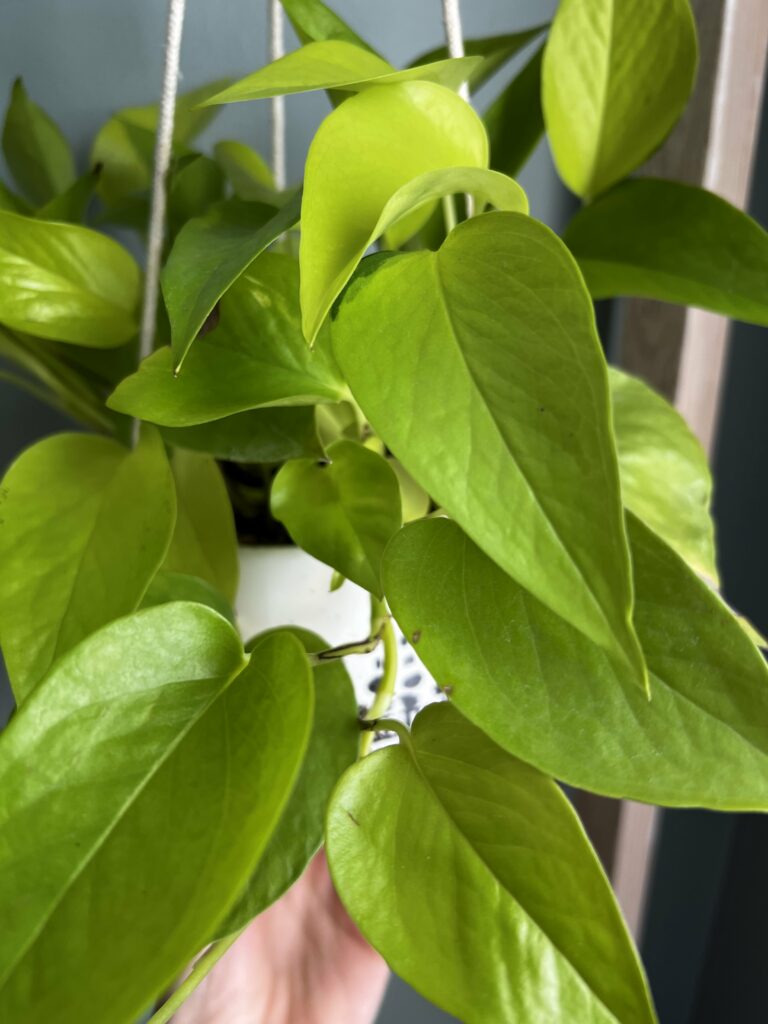
Whitefly
Similar to mealybugs, the whiteflies have very soft bodies and small wings. You can find them on the underside of the leaves, and if you disturb them, they often fly away.
If you want to check your pothos for whiteflies, give it a gentle shake and see if anything flies off of it.
Just like the mealybugs, these feed on the sap, stunt the plant's growth and damage the leaves. Another thing they do is leave a sticky substance behind them that attracts mold.
Blast your plant with a strong spray of water and remove all the nymphs, eggs, and adult whiteflies away.
Then, spray the affected area with an insecticidal soap solution. Finally, you can spray with neem oil to keep them at bay, along with other pests.
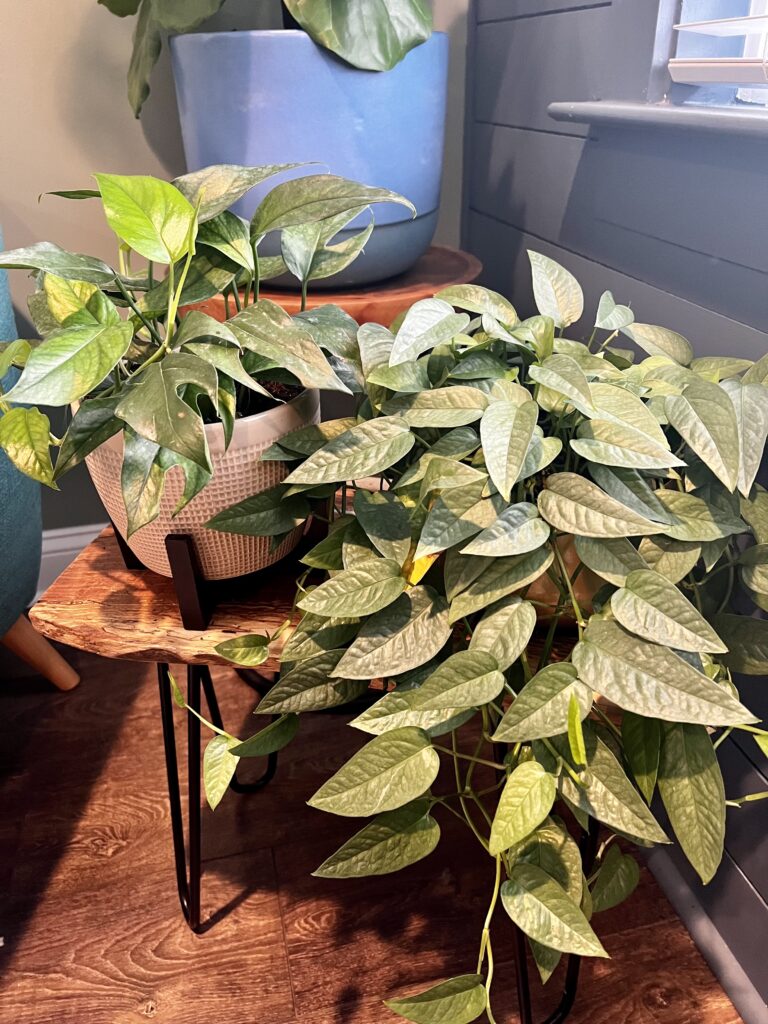
Scale
Another example of the most common pothos pests includes the soft scale. It is by far the most destructive one you'll ever encounter.
At first glance, it looks similar to leaf nodes. You can find them on your pothos' stems, which have a distinct brown color and round shape.
For such tiny insects, the damage they create is striking.
As they attach to the plant, they suck the sap from the leaves and damage the stem system that keeps the plants alive.
If you notice them soon after they’ve made a home on your plant, you’ll see they leave behind deformed and yellowing leaves.
But, if they’re left untreated, they stunt the plant's growth and even contribute to developing a sooty mold.
Since scales are highly invasive, you need to act quickly to remove them. Scrub them off the stems and the leaves, using rubbing alcohol on all affected areas!
Use neem oil to get rid of them during summer, and use a dormant oil to suffocate them in winter.
For those looking for a more homemade solution, use insecticidal soap, or apply a baking soda solution.
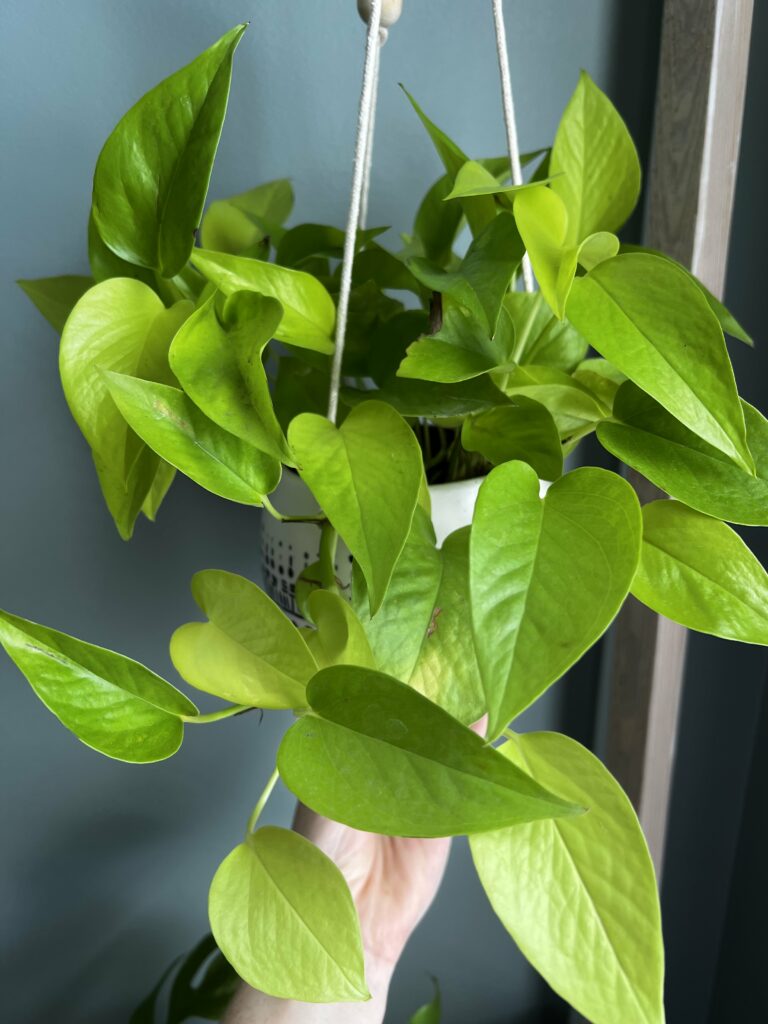
Fungus Gnats
Spider mites on pothos and mealybugs on pothos are nothing compared to the most annoying pest there is – the fungus gnats.
They’re very small bugs that fly around moist soil in humid and warm environments. They lay their eggs to reproduce – thankfully, they are easy to spot. However, they’re not that easy to get rid of.
First things first, you should avoid overwatering your plant. Let the soil completely dry out.
Use some yellow sticky traps to catch the bigger ones, and wash off the rest with a blast of water. Use neem oil, insecticidal soaps, and chemical insecticides for houseplants to get rid of them and allow your plant to thrive.
How to get rid of pothos pests in a natural way?
There is a natural way to get rid of all the annoying bugs that attack your home plant. Here are some of them:
- Use soap spray or oil spray
- Garlic spray
- Neem oil
- Essential oils
- Chile pepper spray and herbal water spray
- Sticky traps
Preventing pest infestation on your pothos plant starts with proper care. Keep pothos pests away from your plant by providing good conditions – and enjoy the beautiful sight of vibrant green plants every day!
If you find reading about this subject useful, don’t forget to download our free PDF Pothos care guide and learn how you can keep your plant healthy!
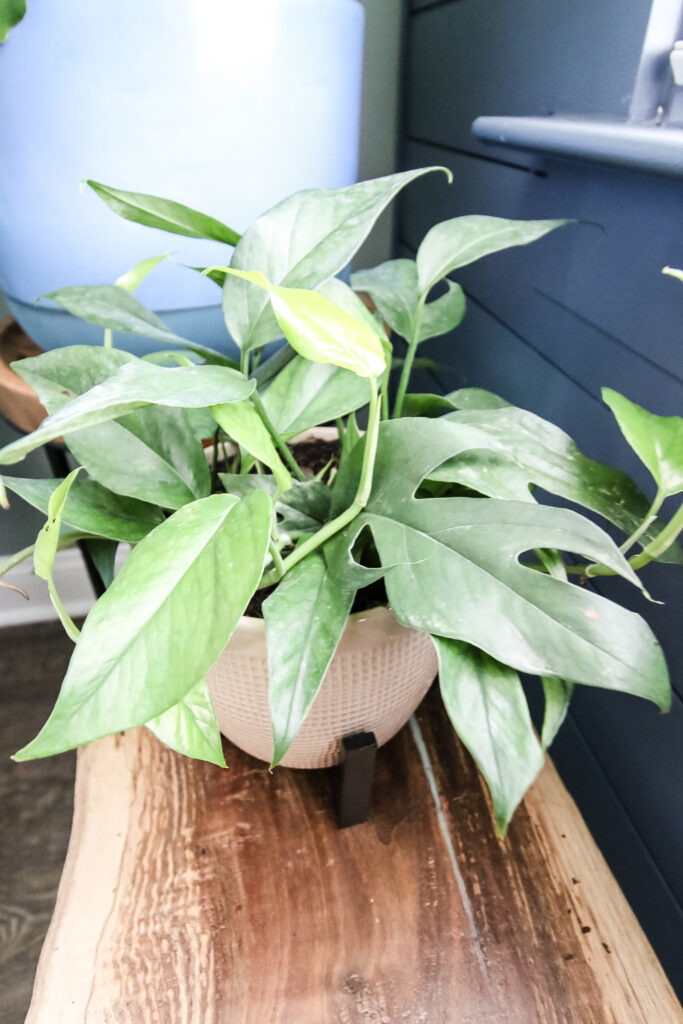
Other pothos content you might enjoy:
- Golden pothos care guide
- Cebu Blue pothos care guide
- Baltic Blue pothos care guide
- Marble Queen pothos care guide
- Global Green pothos care guide
- Neon pothos care guide
- NJoy Pothos Care Guide
- Why are my pothos leaves turning yellow?
- Why are my pothos leaves turning brown?
- Why is my pothos plant not growing leaves?
- Why are my pothos cuttings rotting
- How to move pothos from water to soil
- Should I mist my pothos?
- How to make pothos fuller
- Can you propagate pothos without a leaf?
- Can you propagate pothos from a leaf?
- Can you propagate a long pothos vine?
- Where to cut pothos for propagation
- Pothos vs Snake plants: which is better for beginners?
- Cebu Blue Pothos vs Baltic Blue Pothos
- How to propagate pothos
- How to propagate golden pothos
- How to propagate a satin pothos
- How to propagate pothos in soil
- How often to water pothos plants
- How to care for variegated pothos
- How to revive a dying pothos plant
- Why are my Pothos leaves curling?
- How to identify and treat common pothos pests
- How to divide pothos plant
- How to make pothos grow bigger leaves
- Why does my pothos only have one vine?
- Can you grow pothos in low light conditions?
- How to cut off dead pothos leaves
- Are pothos plants toxic to cats and dogs?
- Can you grow pothos in water?
- Why is my pothos droopy?
- Why is my pothos plant dropping leaves?
Printable Pothos Plant Care Guide
Join the (free!) KeepYourPlantsAlive+ community to access this exclusive printable plant care guide! Or keep scrolling for more!

Thanks for reading!


Hey there, I'm Morgan, a houseplant enthusiast from sunny Charleston, South Carolina. Growing up surrounded by my mom's lush orchids and African violets, I discovered the magic of bringing nature indoors. Thanks to the pandemic, I delved deeper into houseplants, discovering their power to uplift moods and transform spaces. I'm here to spill all my secrets, helping you pick the perfect houseplant - and make it happy. Let's keep your plants alive, together! 😊


